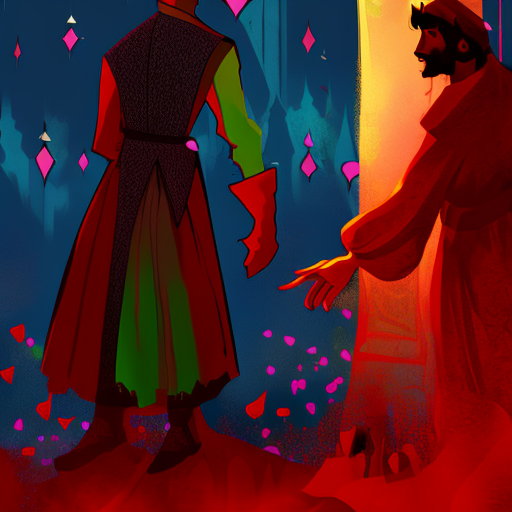The Prince and the Pauper: A Tale of Identity and Empathy
In Mark Twain’s classic novel, “The Prince and the Pauper,” two young boys from vastly different backgrounds switch places, leading to a series of adventures that challenge their understanding of identity, social class, and empathy.
A Chance Encounter: The Prince and the Pauper
The story begins in 16th-century England, where Tom Canty, a young pauper living in the slums of London, dreams of a better life. One day, by a twist of fate, Tom crosses paths with Prince Edward, the son of King Henry VIII. Astonished by their striking resemblance, the boys decide to switch clothes and roles for a short time. However, what starts as a harmless game quickly spirals into a complex web of deception and danger.
Unveiling the Truth: The Struggles of Identity
As Tom assumes the role of the prince, he discovers the harsh realities of royal life. He must navigate the treacherous court politics, learn to speak and act like a prince, and face the constant fear of being exposed as an imposter. Meanwhile, Edward, now disguised as Tom, faces the challenges of poverty and the cruelty of the streets. Through their experiences, both boys gain a deeper understanding of the struggles faced by those in different social classes.
An Exploration of Empathy: Walking in Another’s Shoes
“The Prince and the Pauper” delves into the theme of empathy, as the boys witness firsthand the stark contrast between their respective lives. Tom, who once yearned for a life of luxury, realizes the burdens and responsibilities that come with being a prince. He develops a newfound appreciation for the privileges he once took for granted. Edward, on the other hand, learns about the hardships faced by the less fortunate and becomes determined to use his position to bring about positive change.
Throughout their journey, the boys encounter various characters who challenge their perceptions of the world. From kind-hearted individuals who offer them assistance to manipulative figures who seek to exploit their situation, these encounters further shape their understanding of the complexities of human nature.
Key Takeaways:
- Identity is not solely determined by one’s social status or appearance.
- Empathy can be cultivated through experiencing different perspectives.
- Appearances can be deceiving, and true character lies beneath the surface.
“The difference between our decadent civilization and the ignorant and stupid civilization of the Middle Ages is not immeasurable, but only relatively so. Such as it is, it is precious, and we must guard it and cherish it.” – Mark Twain
In “The Prince and the Pauper,” Mark Twain weaves a captivating tale that explores the themes of identity, empathy, and the power of perspective. Through the eyes of two young boys, readers are reminded of the importance of understanding and compassion in a world that often judges based on appearances. Twain’s timeless story serves as a reminder that true wealth lies not in material possessions but in the ability to see beyond societal divisions and connect with others on a deeper level.












